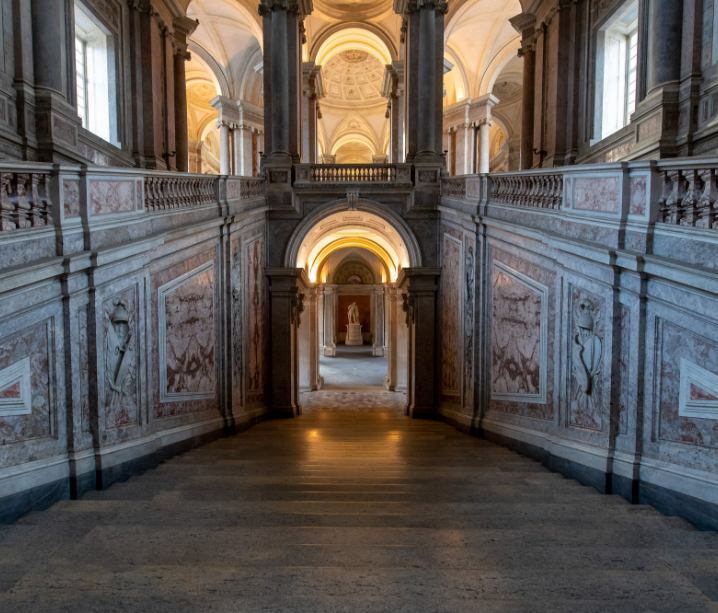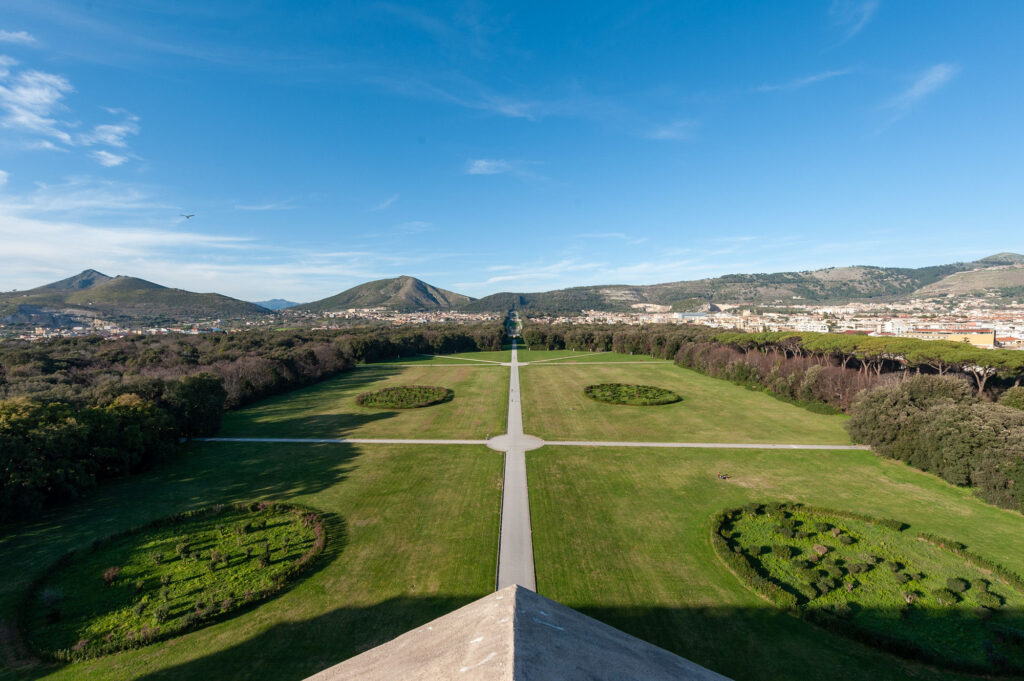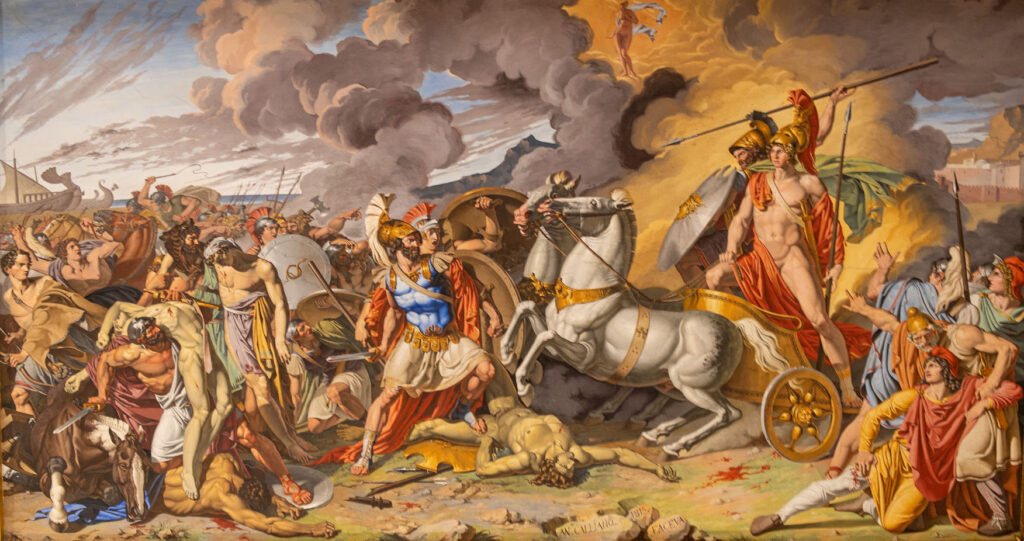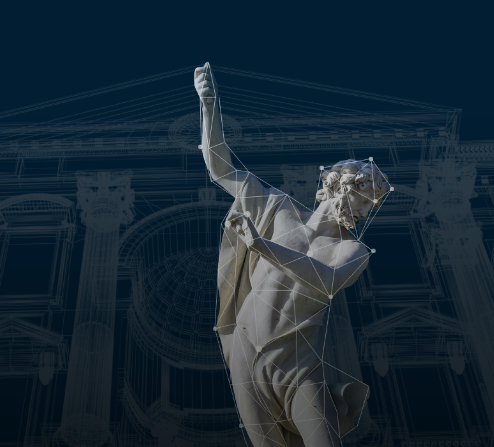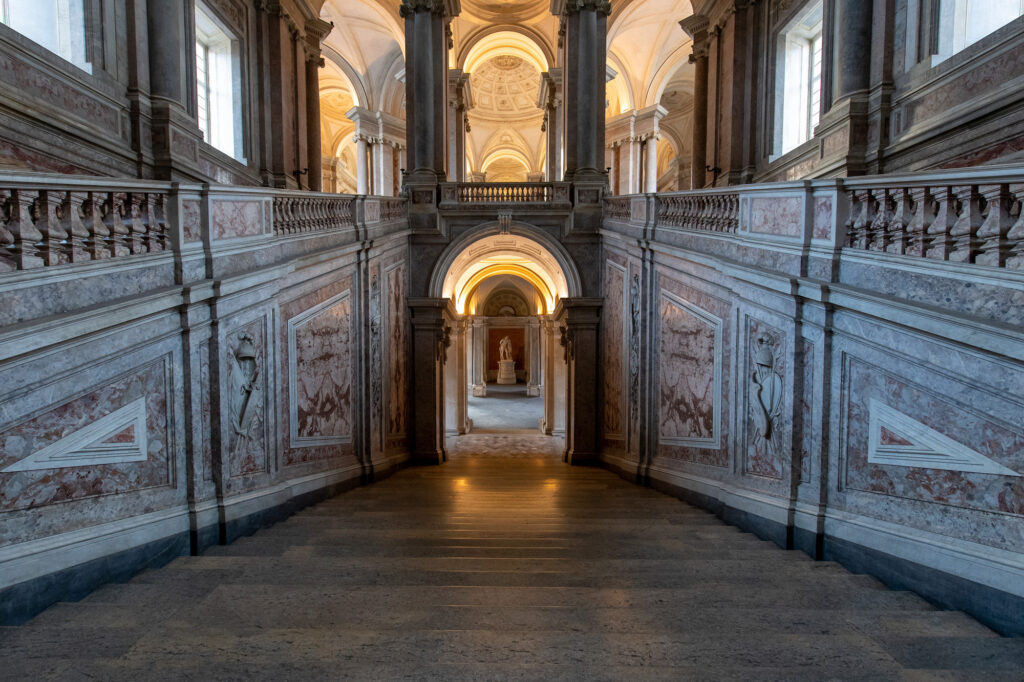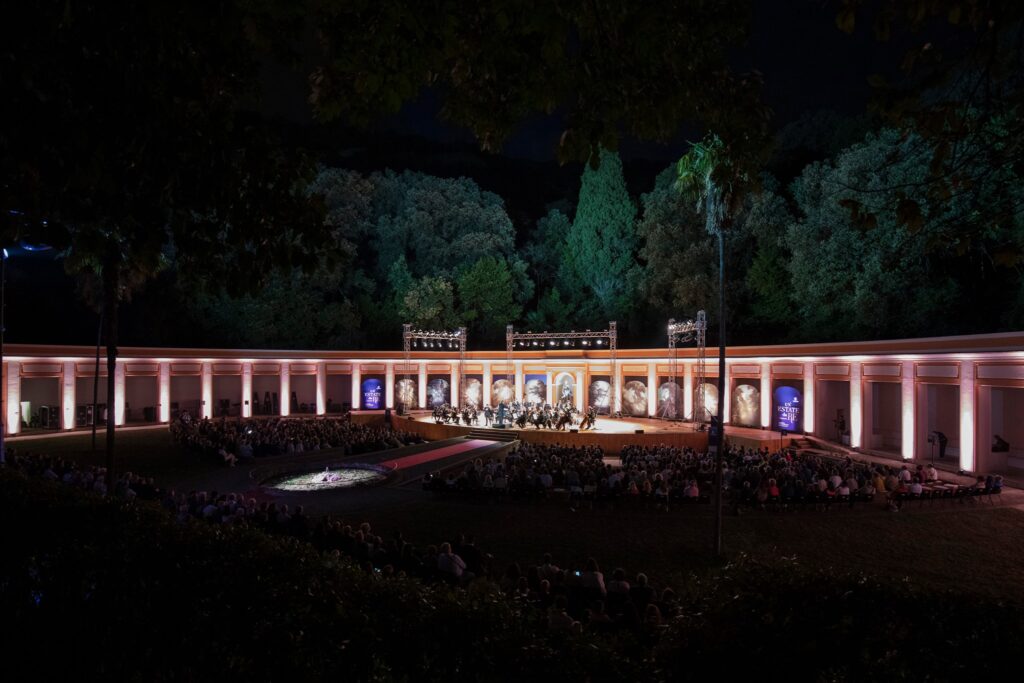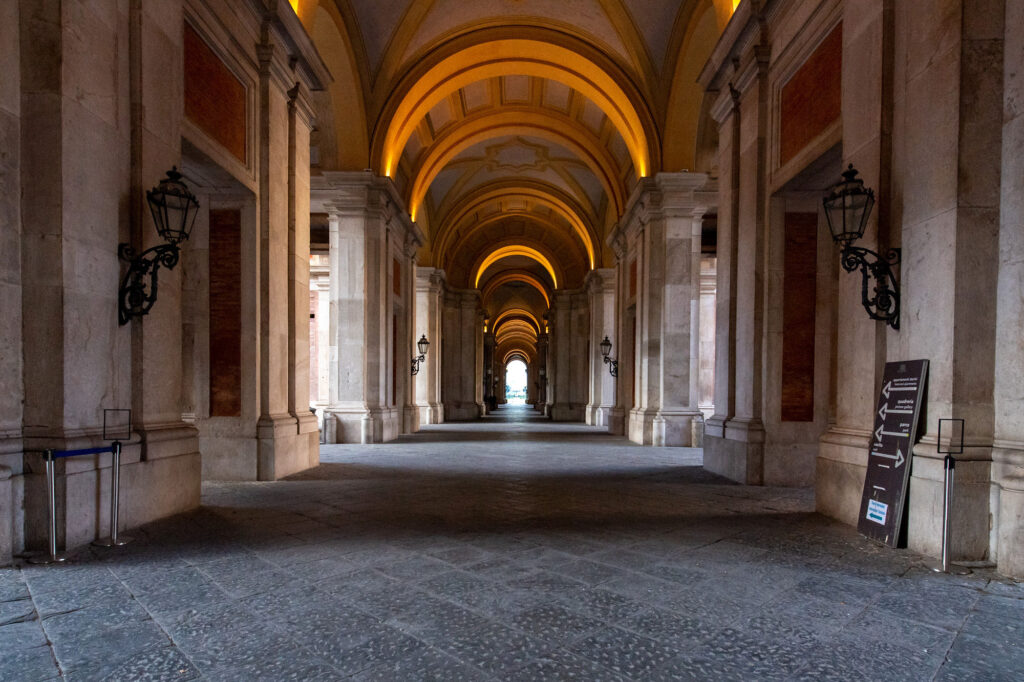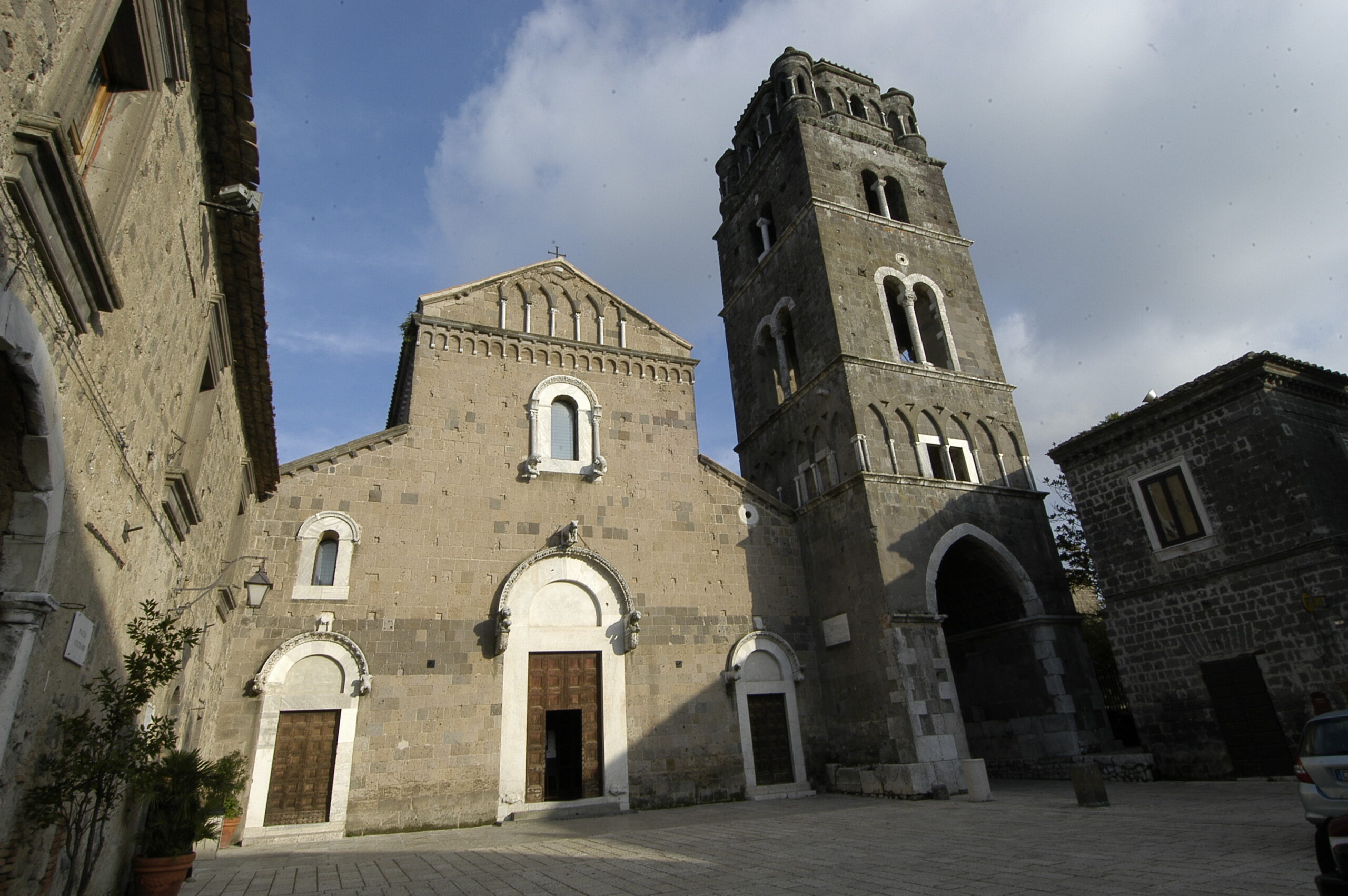The medieval village of Caserta
The village of Casertavecchia is a town of medieval origin located north-east of the current city of Caserta. Casa Hirta probably rose around the eighth century AD, in a perched position ⎼ as the name indicates ⎼ on the slopes of the Tifatini Mountains. Between 900 and 1065 the Lombards made this fort a guarding point for the whole surrounding territory, marking its passage from castellum to civitas. With the Normans arrival, between the 11th and 12th centuries, the village increased its prestige, structuring itself as an administrative nucleus, seat of the count and of the diocese. In the Frederick era it reaches its maximum splendour also thanks to the work of the Countess Siffridina. Emperor Frederick II gave his daughter Violante in marriage to Roberto, Count of Caserta. During these years the bell tower of the Cathedral and the cylindrical tower of the castle were built. Between the fourteenth and sixteenth centuries, under the feudal lords La Rath ⎼ later Italianized in Della Ratta ⎼ the centre gradually began to shift its axis on the plains. During the sixteenth century, with the passage of the fiefdom to the Acquaviva family, the perched town depopulated and lost its role as a territorial centre in favour of the Torre farmhouse, where modern Caserta will rise.
 Find out more
Find out more
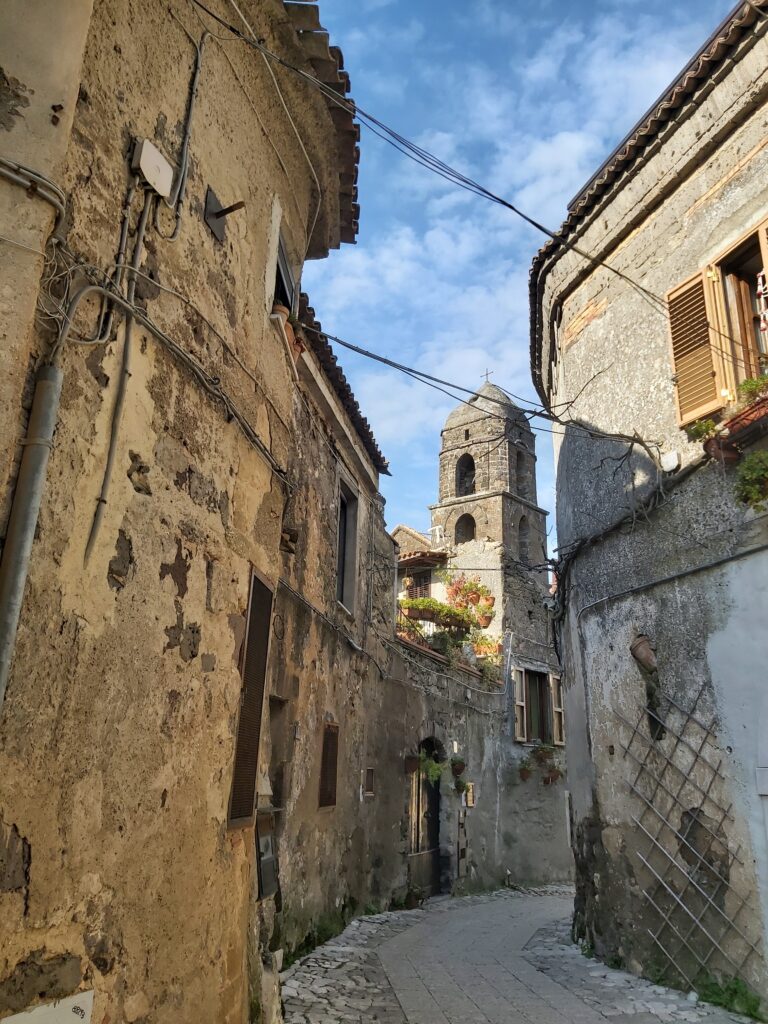
The Historic Centre
The village of Casertavecchia is located about 400 meters above sea level, in a perched position that allows you to admire the entire plains below, including the Royal Palace of Caserta. The center is characterized by the ruins of a castle whose structure dates back to the 11th century, while the tower, over 19 meters in diameter and 30 in height, is one of the largest in Europe. The core of the village is Piazza Vescovado, where one can find the cathedral and the bell tower, the bishop’s palace and the former seminary. Not far from the square is the Church of the Annunciation, a Gothic styled church dated around the end of the fourteenth century. The hospital was conjoined to the church, which is a private home today.



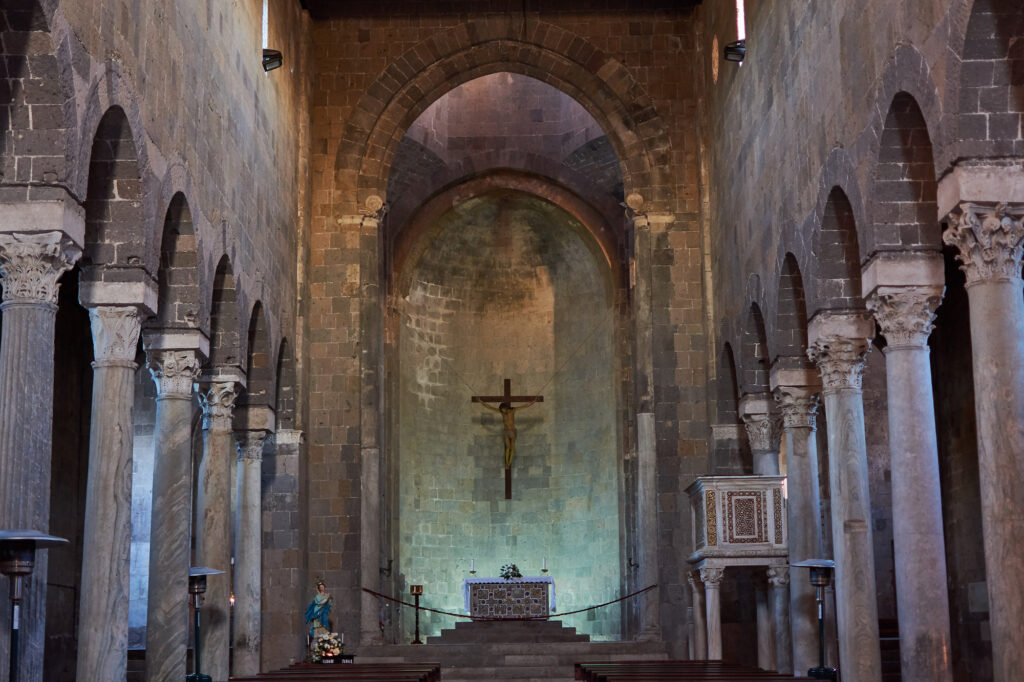
The Dome
The Dome of Casertavecchia is dedicated to the cult of San Michele Arcangelo. Its construction takes place between 1113 and 1153, as evidenced by the inscriptions placed on the portals of the facade, characterized by protruding sculptures in the Romanesque style. The building is laid out as a Latin cross divided into three naves, interspersed with 18 marble columns from older buildings. Today we are only left with the rich mosaic flooring and a fragment of fresco painting depicting a Holy Mary and Child from the original interiors. Inside the building, the seventeenth-century pulpit and the main altar of the cathedral are noteworthy, made by assembling ancient elements. There are also tombs of prominent figures in local history in the cathedral, such as that of Francesco della Ratta, count of Caserta from 1328 to 1359.




The Bell Tower
Next to the cathedral there is a bell tower built in 1234, as evidenced by the plaque located on the side facing the church. The bell tower is spread over five orders decorated with mullioned windows, reaching a height of 32 meters. On the second order lies an arched decoration in harmony with the one on the dome, created during the thirteenth century.








